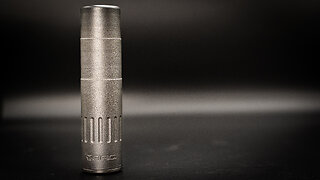Premium Only Content

How to Build a Nuclear Bomb - EDUCATIONAL
Nuclear bombs, also known as atomic bombs or nuclear weapons, are extremely powerful explosive devices that derive their destructive force from nuclear reactions. These weapons release an immense amount of energy in the form of an explosion, radiation, and heat. The two primary types of nuclear bombs are fission bombs and fusion bombs:
Fission Bombs (Atomic Bombs):
Fission bombs work by splitting the nuclei of heavy atoms, typically uranium-235 (U-235) or plutonium-239 (Pu-239). This process is called nuclear fission.
When a fission bomb is detonated, a chain reaction of nuclear fission occurs, releasing a vast amount of energy in the form of an explosion, radiation, and heat.
The most well-known fission bomb is the "Little Boy" bomb, dropped on Hiroshima, Japan, during World War II in 1945.
Fusion Bombs (Thermonuclear or Hydrogen Bombs):
Fusion bombs are more powerful than fission bombs. They use a two-stage process: a fission primary (similar to a fission bomb) triggers a secondary fusion stage.
In the fusion stage, the nuclei of light atoms, typically isotopes of hydrogen like deuterium and tritium, combine to form heavier elements, releasing an even greater amount of energy than fission alone.
The "Tsar Bomba" tested by the Soviet Union in 1961 is one of the most powerful thermonuclear bombs ever detonated.
Nuclear bombs have the potential to cause widespread destruction, create radioactive fallout, and inflict long-lasting harm to the environment and human health. Their use has profound ethical, humanitarian, and strategic implications. International agreements, such as the Treaty on the Non-Proliferation of Nuclear Weapons (NPT), aim to limit the proliferation and use of nuclear weapons.
It's important to note that the use of nuclear weapons is a highly controversial and widely condemned practice, and there are efforts worldwide to reduce and eliminate nuclear arsenals to prevent the catastrophic consequences of their use.
-
 1:08:16
1:08:16
Tactical Advisor
4 hours agoNEW Budget Glocks | Vault Room Live Stream 011
25.7K3 -
 16:30
16:30
SNEAKO
11 hours agoNO FRIENDS IN THE INDUSTRY.
49.3K17 -
 6:19
6:19
BlackDiamondGunsandGear
22 hours agoHow Fat Guys can Appendix Carry
23.8K2 -
 6:58
6:58
Gun Owners Of America
1 day ago2024 Was Huge For Gun Rights, Here's Our Top 10 Wins!
25.7K1 -
 15:50
15:50
Degenerate Jay
1 day ago $1.28 earnedJames Bond Is Being Ruined By Amazon? Make Him A Black Gay Woman?
19.7K9 -
 15:18
15:18
DeVory Darkins
1 day ago $12.04 earnedTrump Drops NIGHTMARE Warning on Joe Biden
36K44 -
 36:13
36:13
The Why Files
1 month agoAlien Implants Vol. 1: Devil’s Den UFO Encounter: What Was Found Inside Terry Lovelace?
67.6K39 -
 9:03
9:03
Alabama Arsenal
1 day ago $0.36 earnedAAC HUB 2K | Modern Features, Iconic Classic Looks
9.7K1 -
 13:49
13:49
Dermatologist Dr. Dustin Portela
2 days ago $0.67 earnedDermatologist Reveals the Worst Things To Do To Your Skin
7.96K2 -
 1:02:24
1:02:24
PMG
23 hours ago $0.22 earned"Hannah Faulkner and Jamie Villamor | DEFEND, INSPIRE, INFLUENCE"
6.56K